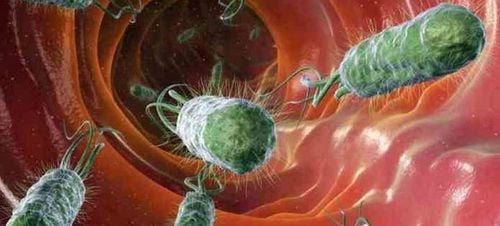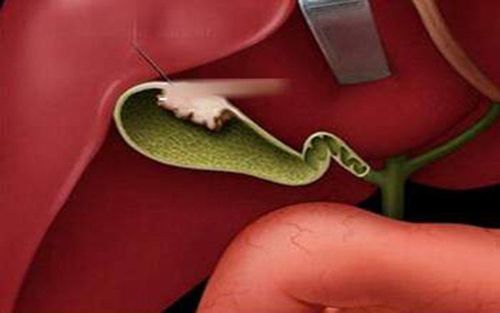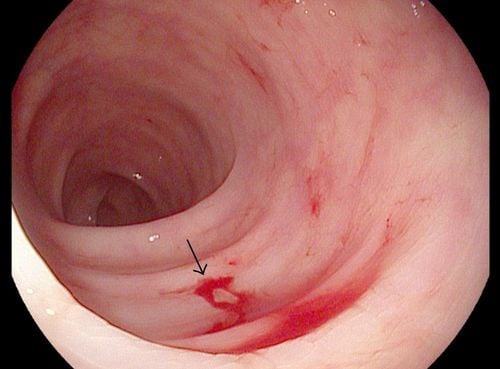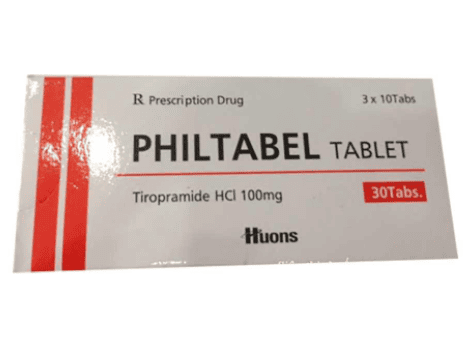This is an automatically translated article.
The article was professionally consulted by Doctor Department of Gastroenterology - Endoscopy, Department of Medical Examination & Internal Medicine - Vinmec Central Park International General Hospital.
Biliary tract infection or cholangitis is usually caused by bacteria and has a wide variety of manifestations. Complications of biliary tract infection such as septicemia, biliary abscess, and cholangiocarcinoma are all potentially fatal if not treated promptly.
1. What is a biliary tract infection?
The biliary tract is a system of pipes that carry bile produced in the liver to the small intestine to digest food. When there is no digestive activity, bile is stored in the gallbladder, when it is necessary to digest food, new bile from the gallbladder passes through the bile duct to the small intestine.
Biliary tract infection is an infection of the bile ducts inside or outside the liver. Infection can occur in the gallbladder, common bile duct, and intrahepatic bile ducts.
2. Causes of biliary tract infection
Bacteria are the leading cause of cholangitis, the bacteria that cause cholangitis are mainly bacteria living in the intestinal tract such as E. Coli, Klebsiella, Streptococcus faecalis, Pseudomonas aeruginosa, these are the causative agents. leading biliary tract infections everywhere.
In our country, the cause of biliary tract infections is mainly due to worms or flukes that accidentally enter the bile ducts combined with other bacteria to cause serious infections.
In addition, when the passage of bile is blocked, it also leads to infection. The causes of obstruction include: gallstones, bile duct worms, cholangiocarcinoma, pancreatic head tumor, ampulla of Vater, stenosis of the muscle of Oddi,... Biliary malformation is also a cause of urinary tract infection. password

3. Target group at risk of biliary tract infection
People who live in rural areas, have unhygienic eating habits, do not eat cooked and drink hot, especially do not pay attention to periodic deworming, are susceptible to parasites such as helminths, causing cholangitis.
Biliary tract infections in children are at high risk because children's resistance is weaker, easily creating conditions for intestinal bacteria to grow, the rate of female patients is 2.4 times higher than that of men. Patients with a history of diseases such as obesity, hyperlipidemia are at risk of gallstone formation, and those with metastatic cancer forming tumors in the biliary tract are at risk of biliary tract infection.

4. Diagnosis of biliary tract infection
Biliary tract infection has the following typical symptoms that patients need to pay attention to for timely treatment:
Patients often have a high fever of 39-40 degrees, continuous and prolonged fever, symptoms of chills and vomiting Sweating Right lower quadrant pain dull and then spreading to the back or right shoulder, digestive disorders, loss of appetite Jaundice due to bile stasis causing the bile pigment bilirubin to seep into the blood In addition to the above typical symptoms, inflammation of the urinary tract Biliary tract also has some atypical symptoms such as: Sepsis, renal failure, bleeding or biliary abscess. blood, blood culture to check for sepsis. Imaging studies that also help evaluate changes in biliary morphology include cholangiopancreatography, endoscopic retrograde cholangiography, and CT or MRI of the biliary tree.

5. Complications of biliary tract infection
Biliary tract infection, if not detected early, will lead to many dangerous complications:
Biliary tract bleeding: Formation of blood clots causing biliary obstruction, bleeding heavily and possibly leading to death Blood infection: This is the most dangerous complication with a mortality rate of 10%. Biliary abscess: Bacteria colonize and form pus and form small abscesses, high fever, enlarged and painful liver. Hepatitis : Stagnant bile fluid forms damage to the liver causing jaundice, digestive disorders, nosebleeds... Cholangiocarcinoma: This complication is quite rare In addition to the above complications, some complications Other also present in cholangitis are biliary peritonitis, biliary atresia, pancreatitis, renal failure...

6. Treatment and care of patients with biliary tract infections
Principles of treatment of biliary tract infections include anti-infection, biliary drainage in the presence of obstruction, and surgical removal of the obstruction.
Use antibiotics for 10-14 days, it is best to have a blood culture if bacteria are present. Antibiotic therapy, anti-septic shock treatment and symptoms such as pain relief, fever reduction Biliary drainage: Use method endoscopic retrograde cholangiopancreatography to remove obstructions such as stones, worms... biliary stents . Congenital biliary malformations causing stricture are also indicated for stenting to release flow. Caring for patients with biliary tract infections: The patient needs to be absolutely rested in bed, reassure the patient, if the patient can't sleep due to pain, give sleeping pills as ordered, take care of personal hygiene, eat Easy to digest food and drink plenty of water, ice the biliary tract if the patient is in pain.
Please dial HOTLINE for more information or register for an appointment HERE. Download MyVinmec app to make appointments faster and to manage your bookings easily.













